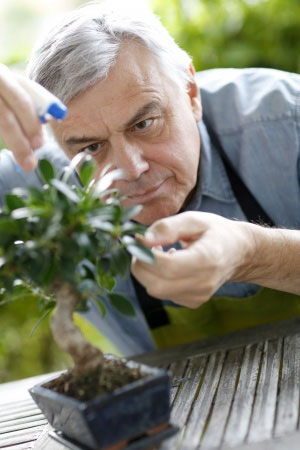 Many people associate the concept of green living with recycling and saving the environment, but what if you took that term literally? Green living could mean filling your space with things that are green and alive– like plants.
Many people associate the concept of green living with recycling and saving the environment, but what if you took that term literally? Green living could mean filling your space with things that are green and alive– like plants.
Houseplant Appreciation Day is January 10th, so now is a good time to figure out how adding a few plants to your home, or the home of someone you love, can introduce a little green to their lives and why that matters when creating your guide to retirement living.
What Makes a Plant a Houseplant?
Gardener’s Network provides an answer to this question that makes sense. A houseplant is any plant that grows and thrives indoors. Not all plants can handle the lower light and cool temperatures associated with indoor growth, but the concept is subjective. Technically, almost any plant can thrive inside as long you provide the right environment.
There are tools that adapt the environment to the needs of the plant.
- Grow lights
- Humidifiers
- Warmers
They all work to create the right atmosphere based on what the plant needs to live. Generally speaking, however, a houseplant lives in a room without too many extras to help it adapt.
What to Look for in a Good Houseplant
If you are a novice indoor gardener, you might be wondering what kind of plant is most likely to thrive in your home. Some houseplants require little more than just the occasional watering. These are good starter plants, according to Midwest Living.
- Aloe. An aloe plant is not only pretty, but medicinal, as well. This is what experts call a succulent, meaning it can go a long time between waterings.
- Anthurium. If you want a plant that adds a little color to your space, then consider the Anthurium. It blooms pretty flowers and has bright green and yellow leaves. The downside to this choice is toxicity. Keep it out of reach of pets and visiting grandchildren
- Asparagus fern. The Asparagus fern will class up any room and makes a nice hanging plant. It offers white flowers and bright red berries, but is also poisonous. So make sure to keep this one away from animals and children, too.
- Peperomia. The Peperomia plant has unique textured leaves that make it an interesting addition to your decor. It requires low light and moderate watering.
- Cast-iron. If light is a problem, then go with a cast-iron plant. It has long, banana-shaped leaves and can tolerate low light and a range of temperatures.
- Philodendron. If every other plant you have ever tried to grow has died, the philodendron is the plant for you. They thrive in just about any environment as long as it is not too hot.
Why Houseplants Matter
Why go to the trouble of filling your home with houseplants in the first place? There is more to it than just adding some green. Houseplants serve as natural air purifiers. Bayer Advanced explains that they remove up to 87 percent of volatile organic compounds from the air. Things like:
- Cigarette smoke
- Toxins from plastic bags such as formaldehyde
- Chemicals from solvents and paint
Houseplants don’t just filter out the bad things, they actually add to the air, as well. They absorb carbon dioxide and release oxygen. They will increase the humidity in your home by expelling moisture. Plants work to improve energy levels and ease tension. The plants that offer the most health benefits include:
- Spider plant
- Dragon tree
- Boston fern
- Philodendron
- Snake plant
- Peace lily
Finding the right plant combination for your home is trial and error. As you create your own guide to green retirement living, you’ll figure out what works and what doesn’t. Over time, you will create an indoor garden that is green, lush and healthful.












